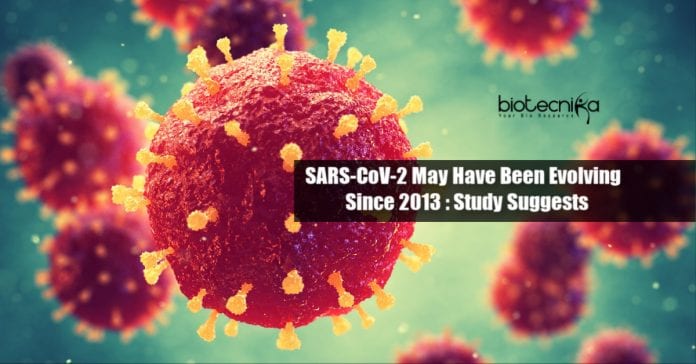Origin Of Novel Coronavirus – May Have Been Evolving Since 2013
Since its first appearance in late 2019, scientists had been studying its genome to understand more about the virus, and there were findings that said the virus jumped from animals to humans.
There have also been theories that said the virus is man-made and originated in a laboratory even though scientific evidence points towards its natural original.
Scientists at the University of Calgary, Canada, now say that the novel coronavirus responsible for COVID-19 may have been circulating among humans since at least 2013, though not the same variant as now.
The study hasn’t been peer-reviewed yet and is currently available in the preprint server Biorxiv.
The scientists also tried to understand the possible origins of SARS-CoV-2 and how the ACE2 receptor plays a role in viral infection.
Origin And Evolution of Novel Coronavirus
Viruses keep evolving with their host organism to be able to survive. When a virus jumps from an animal to a human, a new viral pathogen usually emerges. So even if the virus didn’t cause much harm to the animal, it could be highly virulent/infectious in humans. For example, the new coronavirus can live inside bats
without harming them, because the bat immune system has evolved to keep the virus in check. But the case is different with humans. So humans fall sick if infected with the coronavirus.The study
A receptor called ACE2 found on humans cells is what helps the SARS-CoV-2 virus to invade healthy cells by binding to the viral spike protein. The scientists studied how strongly the current variant of spike protein binds to the ACE2 receptor.
To understand the evolutionary development of the virus compared to other closely related viruses, they looked into 479 genome sequences of SARS-CoV-2 collected between December 30, 2019, and March 20, 2020.
In more than 5% of infections, they found nearly 11 missense mutations ( single nucleotide mutation make the DNA/RNA to code for different protein) and 16 variants of the virus.
They also confirmed that the genome of novel coronavirus is at least 96% similar to that of bat coronavirus — RaTG13 and 90% to pangolin coronavirus (Pangolin-CoV). According to previous studies, the current coronavirus could be a combination of these two viruses.
The part of the spike protein that actually interacts with the ACE2 receptor is called the Receptor binding domain. To study the origin of the virus, the researchers created a common ancestral RBD sequence for all COVID-19 viruses and labeled it N1, and its common ancestor with the closest animal virus was labeled as N0.
And they discovered that;
- The N0 sequence was unique, while the N1 sequence was the same as that of the reference sequence from the novel coronavirus, suggesting a unique origin of the virus.
- Only four positions are different in the tow RNA/DNA sequences.
- RaTG13 is one of the closest relatives of the SARS-COV-2 virus. Since it was found in 2013, the original ancestor of SARS-CoV-2 must have been from that time as well.
- Surprisingly, the earlier variants bound more strongly to the human ACE2 receptor than the recent one.
The binding affinity of the virus to the ACE2 receptor may not determine its infectivity, the study suggests. The viral infectivity might have increased due to some other reasons. Also, the ancestor could have been infecting humans for a while, but with milder symptoms.
































